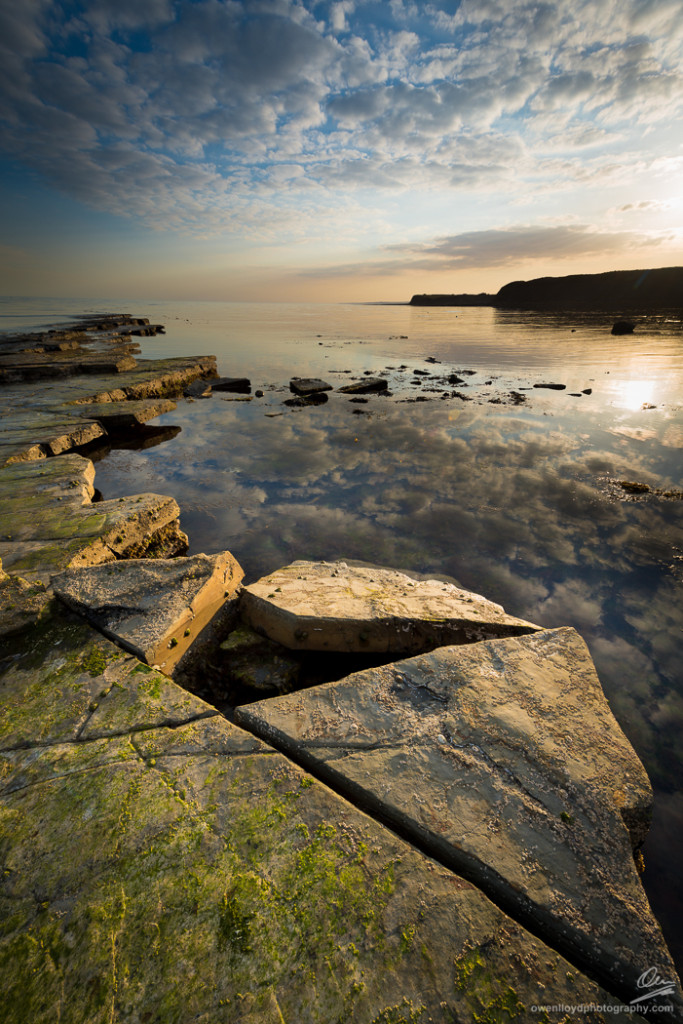I was due in Poole on Wednesday morning so decided to drive down the day before and visit the coast for some landscapary before checking into the hotel. It’s a 4.5 hour drive from my house and I plumbed the Durdle Door car park into the sat-nav. Was all going well until I got within about 5 miles, at which point, the radio announced that the path down to the beach in Lulcroft bay had, well, fallen off. That’s right, just as I get within a few miles of the place, the cliff fell apart, taking the steps down to the beach with it. Oh well.
I changed course and, navigating by the sun, I headed south until I ran out of land and parked. I had arrived in Kimmeridge bay, a few miles to the east of Durdle door. It was about 4 hours to sunset so plenty of time to go down the path to the “beach” and look for some shots. The beach is covered in large smooth, round boulders. The cliffs have very obvious strata, which continue under the boulders on the beach, and as they are not quite horizontal, huge flat plates of harder rock jut out of the ground at a shallow angle. This has created some spectacular rocky ridges out into the bay, and it looked like I was on for some sidelight from the sun in a couple of hours time.
The tides are a little weird in this area, with a double dip before it comes in properly, but from the looks of the graph on the tides planner, it looked like the rocky outcroppings would still be visible when the light arrived. If they were covered, I figured the water would be up to the nice round boulders and I’d do those instead. Went back up to the car park and brought the gear down, scoped out 3 compositions, put the main bag down out of the way of all 3 shots and set up on the first one, got the composition in, focus set and filter holder attached to the 14-24mm Nikkor.
Made the shots mainly using a 3 stop hard grad to control the sun and it’s reflection, and bracketed 5 stops (2 up and 2 down). Adjusted the shot to include more sky when these wonderful clouds arrived.
Now, I checked the ISO, WB, exposure comp, and formatted the card, however what thunder-thumbs forgot was that the 14-24mm has round blades on it’s diaphragm and so renders the sun as a general mush. Rounded aperture blades make nicer out of focus areas as the specular highlights are more circular. However you don’t tend to shoot selective focus so close in like this and you don’t get nice sun-stars when the lens is stopped down. I should have used the old 20mm AIS that has 7 straight blades. Next time.. I did try cropping the sun out but I do prefer this one. I might use the tighter crop for competitions as judges always pick up on highlights near the edge of the frame.
